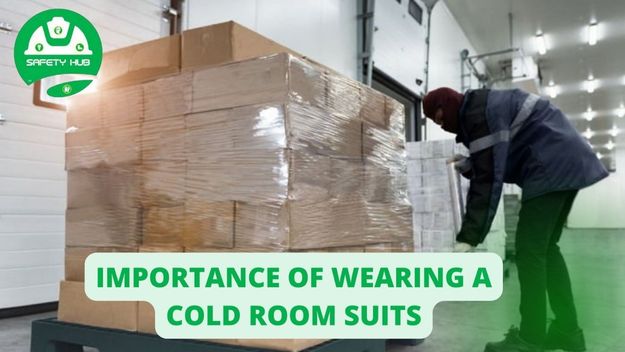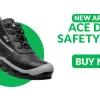- Empty cart.
- Continue Shopping
Cold Rooms Suits Buying Guide

People working in cold rooms or walk-in freezers have to keep warm to be productive when carrying out their duties.
Even if they wear up clothes to keep warm without the protective uniforms, they will still be left feeling cold and exposed.
Cold room uniforms offer full body protection in cold storage environments to keep the wearer warm.
Why do you need a cold room suit?
- They prevent cold-related diseases
Workers in cold rooms without the necessary PPE can get hypothermia and frostbite due to the cold. Hypothermia is the most common illness when the body temperature drops to 95° F.
The suit is made with a thermal lining that keeps the worker warm and prevents the drop in temperatures in the wearer’s body. It’s also water repellent and wind-tight making it perfect for cold rooms
- Provides full-body protection
The cold-room suit covers the wearer from head to ankle. This helps it to trap the body heat to retain the warmth.
They are padded with thermal lining all the way to ensure that the wearer is warm in a harsh environment.
- Increases productivity
Workers without cold room suits tend to use a lot of energy to generate heat as the temperatures are really low. This makes them not exploit their full potential and feel tired and sluggish.
The drop in temperatures also makes unprotected workers uncomfortable to work for longer hours as their hands and feet are numb to even hold anything. The suit makes the worker comfortable to carry out their duties without getting tired and cold easily.
Factors to consider before purchasing a cold-room suit
Cold Rooms Suits Buying Guide includes:
- The insulation capabilities of the suit as it determines how much warmth the suit will provide.
- Water repellent and wind-tight finish to keep out the chill from condensation.
- Knee patches provide comfort when they kneel to work or carry out any activity.
- Tear resistant to ensure that it lasts long enough.
- Perfect size for your body.
Standards the cold-room suit should meet
Any cold room suit or uniform should meet the following standards:
- Must protect the body from temperatures below -5c
- The cold room suit should have an insulating air layer that retains the body’s warmth.
- The cold room suit should be tested for heat insulation and air permeability including undergarments and head, hand, and footwear.
- Testing using a heated mask in to assess the garment
- The cold room suit should be tested to determine the total thermal insulation of the garment. During the test, the suit is dressed in the test garment and then heated and maintained at a specified temperature above ambient.
The thermal insulation is then determined by the power it maintains at this constant temperature.
- Cold room suit should be water resistant
Thou the test is optional, the clothing must be breathable and pass the water vapor resistance test.
- The standard also includes requirements for the strength of the outer fabric, dimensional stability to cleaning, coated materials flexibility (-50°C), and harmless.
- The cold room suit should be lightweight
The clothing should be lightweight to ensure that it does not impede the wearer when working. However, it should also be sufficiently insulating in very low temperatures to keep the wearer comfortable and warm.
- It should also be wind resistant and have a degree of water vapor permeability to prevent moisture build-up inside the garment
- The cold room suit should be dry
The cold room suit should remain dry. Moisture needs to be kept off the clothes by removing snow before entering heated shelters.
While the worker is resting in a heated area, perspiration should be allowed to escape by opening the neck, waist, sleeves, and ankle fasteners or by removing outerwear.
If the rest area is warm enough it is preferable to take off the outer layer(s) so that the perspiration can evaporate from the clothing.
- The cold room suit should provide adequate insulation
The additional layers of clothing should provide adequate insulation for the weather conditions under which the work is being done. They should also be easy to open or remove before you get too warm to prevent excessive sweating during strenuous activity.
- Outer jackets should have the means for closing off and opening the waist, neck, and wrists to help control how much heat is retained or given off.
Conclusion on Cold Rooms Suits Buying Guide
In conclusion, your safety should come first and the safety hub is here for you. Contact us and get advice on the right equipment, the proper footwear, and the right workers’ clothing suitable for you. Visit our online store at https://safetyhub.co.ke or email us at info@safetyhub.co.ke Your safety is our concern.





